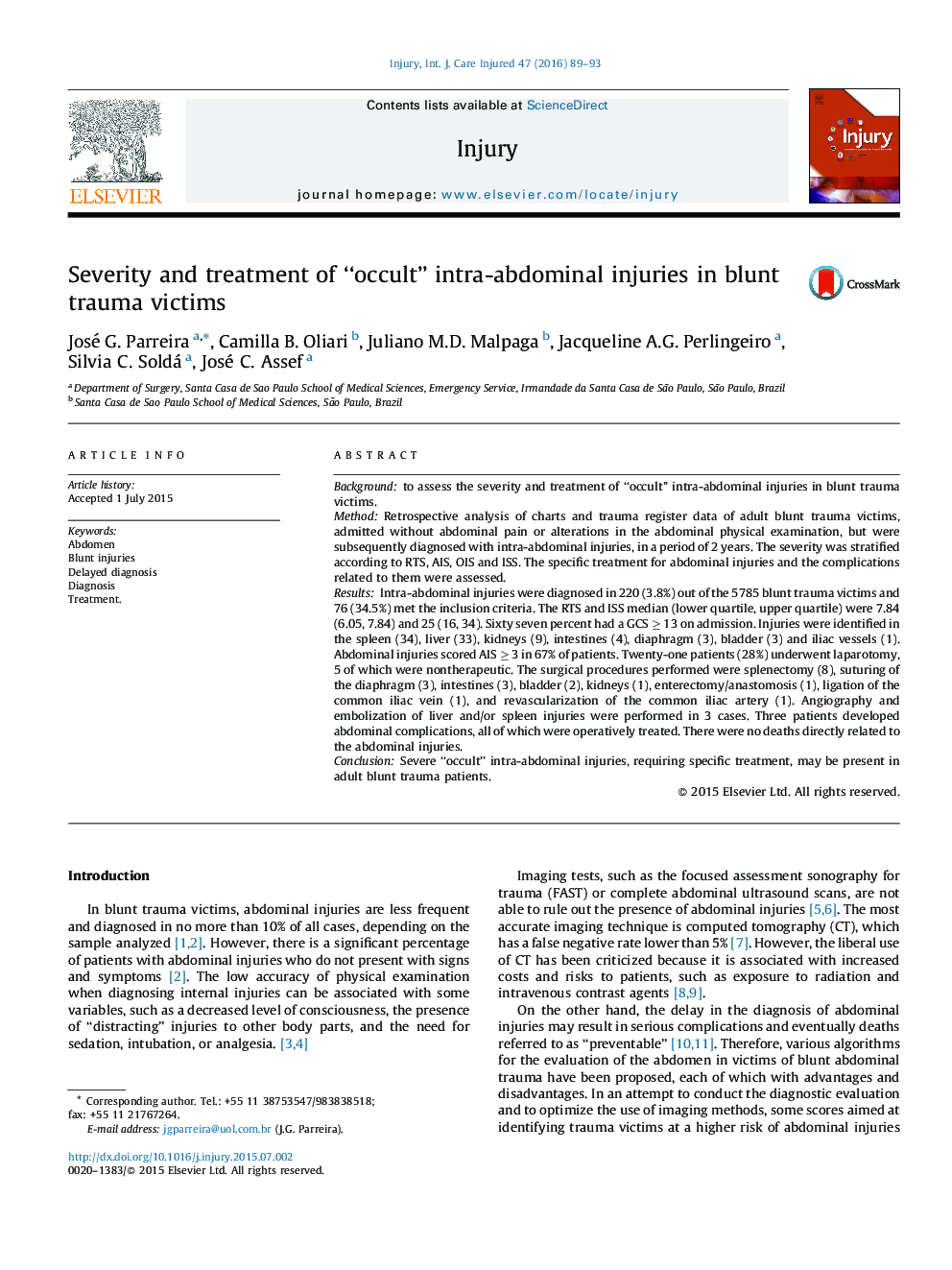| Article ID | Journal | Published Year | Pages | File Type |
|---|---|---|---|---|
| 6082869 | Injury | 2016 | 5 Pages |
Backgroundto assess the severity and treatment of “occult” intra-abdominal injuries in blunt trauma victims.MethodRetrospective analysis of charts and trauma register data of adult blunt trauma victims, admitted without abdominal pain or alterations in the abdominal physical examination, but were subsequently diagnosed with intra-abdominal injuries, in a period of 2 years. The severity was stratified according to RTS, AIS, OIS and ISS. The specific treatment for abdominal injuries and the complications related to them were assessed.ResultsIntra-abdominal injuries were diagnosed in 220 (3.8%) out of the 5785 blunt trauma victims and 76 (34.5%) met the inclusion criteria. The RTS and ISS median (lower quartile, upper quartile) were 7.84 (6.05, 7.84) and 25 (16, 34). Sixty seven percent had a GCS â¥Â 13 on admission. Injuries were identified in the spleen (34), liver (33), kidneys (9), intestines (4), diaphragm (3), bladder (3) and iliac vessels (1). Abdominal injuries scored AIS â¥Â 3 in 67% of patients. Twenty-one patients (28%) underwent laparotomy, 5 of which were nontherapeutic. The surgical procedures performed were splenectomy (8), suturing of the diaphragm (3), intestines (3), bladder (2), kidneys (1), enterectomy/anastomosis (1), ligation of the common iliac vein (1), and revascularization of the common iliac artery (1). Angiography and embolization of liver and/or spleen injuries were performed in 3 cases. Three patients developed abdominal complications, all of which were operatively treated. There were no deaths directly related to the abdominal injuries.ConclusionSevere “occult” intra-abdominal injuries, requiring specific treatment, may be present in adult blunt trauma patients.
